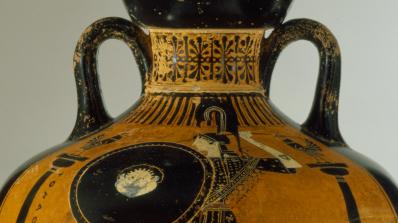-
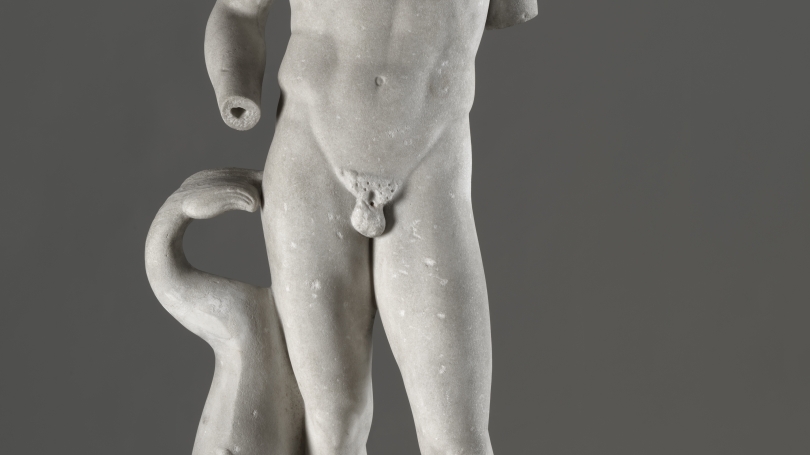
Roman, statue of Poseidon / Neptune alongside dolphin, first century CE (Flavian [CE 69–96]?), marble. Tampa Museum of Art, Joseph Veach Noble Collection 1986.135
Roman, statue of Poseidon / Neptune alongside dolphin
First century CE (Flavian [CE 69–96]?)
Marble.
Tampa Museum of Art, Joseph Veach Noble Collection 1986.135.
-
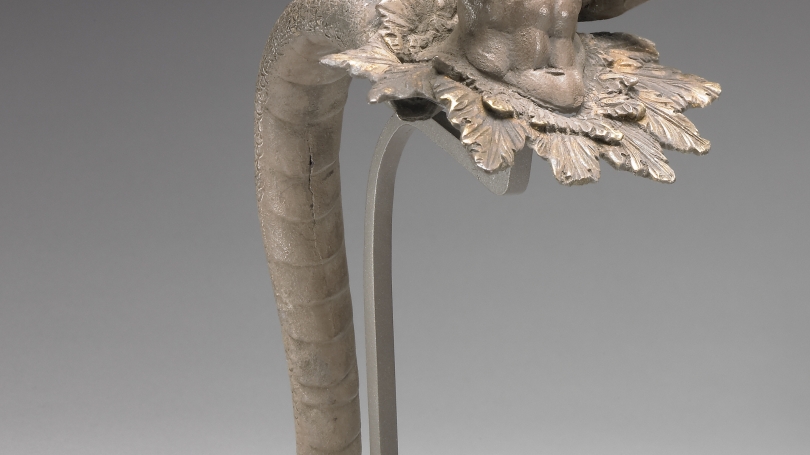
Greek, Macedonian, or Illyrian, handle in the shape of triton, about 100–50 BCE, silver and gold. The Paul J. Getty Museum, Villa Collection, Malibu, California; 85.AM.163
Greek, Macedonian, or Illyrian
Handle in the shape of triton
About 100–50 BCE
Silver and gold.
The Paul J. Getty Museum, Villa Collection, Malibu, California; 85.AM.163.
-

Greek, Etruscan, or Roman, trident, 6th century BCE or later, bronze. The Paul J. Getty Museum, Villa Collection, Malibu, California; 79.AC.115
Greek, Etruscan, or Roman
Trident
6th century BCE or later
Bronze.
The Paul J. Getty Museum, Villa Collection, Malibu, California; 79.AC.115.
-
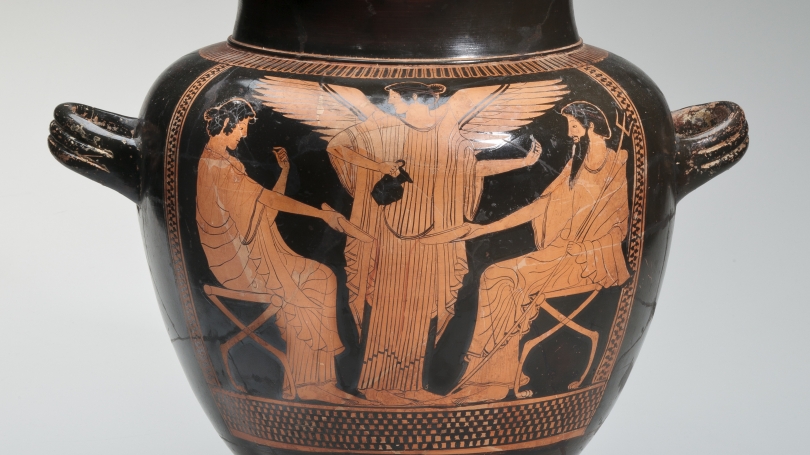
Greek, Attic, attributed to the Syleus Painter, Poseidon and Amphitrite receiving libation from Nike, red-figure stamnos, about 470 BCE. Toledo Museum of Art: Purchased with funds from the Libbey Endowment, Gift of Edward Drummond Libbey; 1956.58. Photo: Richard P. Goodbody, Inc.
Greek, Attic, attributed to the Syleus Painter
Poseidon and Amphitrite receiving libation from Nike, red-figure stamnos
About 470 BCE
Toledo Museum of Art: Purchased with funds from the Libbey Endowment, Gift of Edward Drummond Libbey; 1956.58. Photo: Richard P. Goodbody, Inc.
-
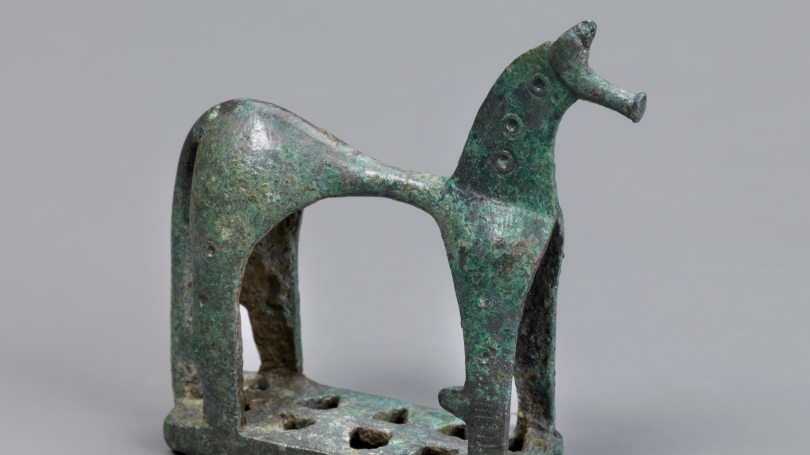
Greek, Thessalian, horse figurine, late 8th century BCE, bronze (solid cast, with stamped and incised decoration). Tampa Museum of Art, Museum Purchase; 1995.004.
Greek, Thessalian
Horse figurine
Late 8th century BCE
Bronze (solid cast, with stamped and incised decoration).
Tampa Museum of Art, Museum Purchase; 1995.004.
-
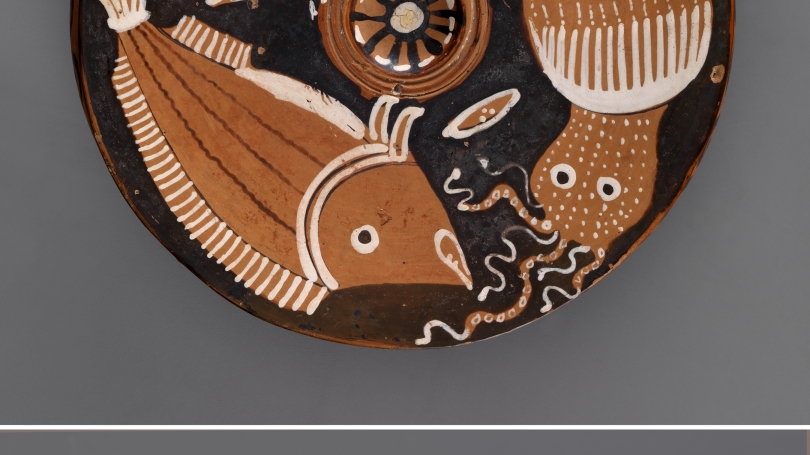
South Italian, Apulian, attributed to the Painter of Ruvo 964 (Canosa Group), red-figure fish plate: red mullet, wrasse, cuttlefish, mussel, about 320 BCE, ceramic. Tampa Museum of Art: Joseph Veach Noble Collection 1986.108. Above: surface, below: side view.
South Italian, Apulian, attributed to the Painter of Ruvo 964 (Canosa Group)
Red-figure fish plate: red mullet, wrasse, cuttlefish, mussel
About 320 BCE
Ceramic.
Tampa Museum of Art: Joseph Veach Noble Collection 1986.108. Above: surface, below: side view.
-
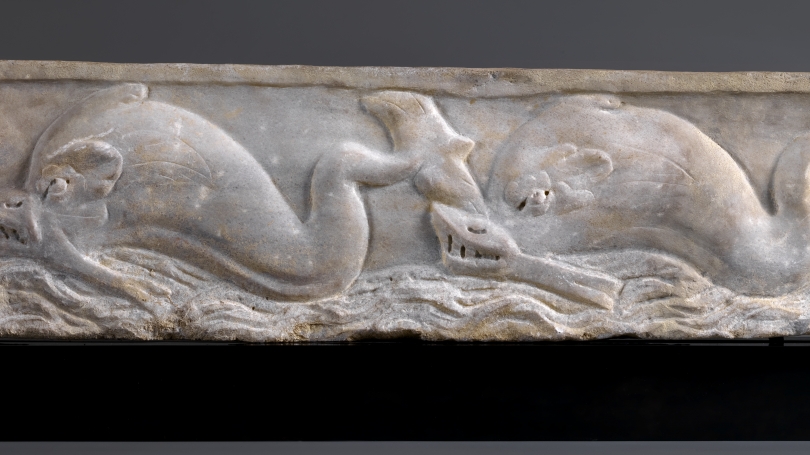
Roman, Imperial, about 150–160 CE, sarcophagus lid fragment; two dolphins swimming left on waves, marble. Tampa Museum of Art: Gift of C. B. Richard Ellis, Inc., and Camden Properties; 2004.006.
Roman, Imperial
Sarcophagus lid fragment; two dolphins swimming left on waves
About 150–160 CE
Marble.
Tampa Museum of Art: Gift of C. B. Richard Ellis, Inc., and Camden Properties; 2004.006.
-
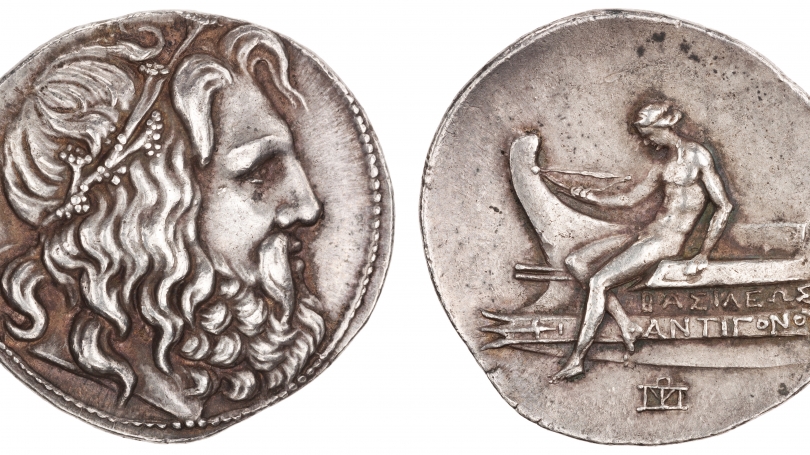
Greek/Macedonian, tetradrachm: Poseidon head (obverse); youth (Apollo?) on prow (reverse), 229–220 BCE (minted under Antigonos Doson), silver. American Numismatic Society; 1966.75.26.
Greek/Macedonian
Tetradrachm: Poseidon head (obverse); youth (Apollo?) on prow (reverse)
229–220 BCE (minted under Antigonos Doson)
Silver.
American Numismatic Society; 1966.75.26.
Location
Temporary Exhibitions, Lathrop, Jaffe, and Hall Galleries
About
The realm of Poseidon encompassed virtually every aspect of life in the ancient Mediterranean world, from mythology and cult to daily activities. This exhibition explores each of his dominions through more than one hundred works of Greek, Etruscan, and Roman art produced between 800 BCE and 400 CE. Visitors will see striking black-figure and red-figure pottery, alongside sculptures in terracotta, marble, and precious metals, and extraordinary examples of ancient glass, mosaics, carved gems, and coins, all providing a rich picture of life in the ancient world. Poseidon and the Sea offers an intimate look not only at the mysteries of the ancient world, but also at the timeless beauty and wonder of the sea that continues to resonate with us in the present day.
This exhibition was organized by the Tampa Museum of Art.
The exhibition's presentation at the Hood Museum of Art was generously supported by the Eleanor Smith Fund, the Evelyn A. J. Hall Fund, and the Marie-Louise and Samuel R. Rosenthal Fund.
Exhibition Curator
Curated by Seth D. Pevnick Ph.D.
Additional Information
Related Exhibitions
Press Mentions
